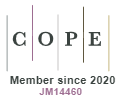The waving of sense - photography and haikai by Roland Barthes
DOI:
https://doi.org/10.5585/dialogia.N29.8687Keywords:
Roland Barthes. Photography. HaikaiAbstract
Roland Barthes’ first ventures into the comparative possibility between photography and haikai date back to the 1970s with the book The empire of signs, and will span the rest of his work for a decade, culminating in the book Camera lucida. Before that, in the period between 1978 and 1980, in the course entitled The preparation of the novel, ministered in the Collège de France, later compiled in book, Barthes dedicate almost eight weeks, exclusively, to the way of doing Eastern poetry and his photographic suggestion. The subjective and the imaginary, which had already been reserved in all of the Barthesian work, are here reconfirmed. This insistence on the force of singular writing before a pretended objectivity of the world, intended by many but unable to account for the emotional afflictions that move us in this universe of signs, seems to ensure Barthes see haikai and also photography as a particularly exemplar of achieving the peculiar to the detriment of the totality.Downloads
Download data is not yet available.
Downloads
Published
2018-08-24
How to Cite
BUENO, Iury Carlos. The waving of sense - photography and haikai by Roland Barthes. Dialogia, [S. l.], n. 29, p. 21–32, 2018. DOI: 10.5585/dialogia.N29.8687. Disponível em: https://uninove.emnuvens.com.br/dialogia/article/view/8687. Acesso em: 19 oct. 2024.
Issue
Section
Dossiê Temático: Educação e Multiculturalismo






